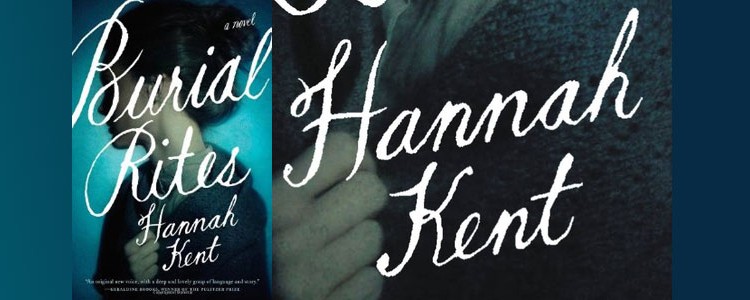Play with Me
 Today, Ananth Padmanabhan’s debut novel, Play with Me, goes on sale. It is a slim novel
Today, Ananth Padmanabhan’s debut novel, Play with Me, goes on sale. It is a slim novel
about a successful photographer, Sid, in a boutique ad agency. He is focused on his job, till he meets Cara, who has applied to be an intern at the agency, specifically working with Sid. Cara has relocated to India from New York. Her father is an Indian diplomat and her Turkish mother is the Islamic Art Consultant at the Met. Cara and Sid have a rollicking affair. They are sexually obsessed with each other, but slowly the relationship evolves. Cara introduces her girlfriend, Rhea to Sid too. But Sid discovers he is falling in love with another women altogether–Nat. It does make for a complicated situation. 
In a recent interview, Ananth Padmanabhan said “One day, when we were discussing EL James [author of the notorious S&M fantasy novel Fifty Shades of Grey] and commissioning erotic fiction, Chiki [ Sarkar] said, ‘A, you have to write this’; R Sivapriya [Penguin’s managing editor] had seen my work and told her about it. I said I’d give it a shot. On my commute from Gurgaon to Delhi every day, I would think about what I would do,” says the publisher’s unlikely erotica debut, Ananth, senior vice-president of sales. “It’s very difficult to get it right.” He couldn’t have picked a better or more difficult place to try his hand at writing about pleasure; your average head of sales is both perfectly placed to understand his market and new to playing the role of author. ( Rajni George, “Between the sheets”, OPEN, 31 July
2014 http://www.openthemagazine.com/article/books/between-the-sheets )
Ananth Padmanabhan, is Vice-President, Sales, Penguin Random House India. He has been with the firm since 1997 when David Davidar, then Penguin publisher offered him a job. As an experienced book salesman, he has a sharp sense of what it requires for a book to sell. At the same time he has a keen eye for detail as his passion for photography shows. In fact, two years ago he held an
exhibition of his black and white photographs called ‘Calcutta Walking in the City’–each frame had a story to tell. He blends his professional and personal interests well in his debut novel, Play with me. The book may have been commissioned out of a need to look for the Indian middle-class English reader of Fifty Shades of Grey, but as is the wont with good debut novelists, they tell a story with a fresh voice, anchored in details that they are usually most comfortable with. Ananth’s love for photography makes Play with me work at many levels– erotic fiction with competent and nuanced storytelling.
 Play with Me is one of the few books published by prominent Indian publishers that deals with the genre of erotic fiction. Some of the others are A Pleasant Kind of Heavy and Other Erotic Stories by Aranyani ( Aleph Book Company, http://alephbookcompany.com/pleasant-kind-heavy-and-other-erotic-stories ) and Blue: The Tranquebar Book of Erotic Short Stories from Sri Lanka, edited by Ameena Hussein ( Tranquebar Press, Westland, http://www.westlandbooks.in/book_details.php?cat_id=4&book_id=304 ). Over a year ago, Rupa Publications launched the Confession series of low-priced books written by ordinary folks, sometimes anonymously, of sexual encounters that they had experienced in their daily lives. Apparently these were “true” accounts written by tutors, housewives, young office workers etc. Unfortunately I am unable to locate the link to these stories now.
Play with Me is one of the few books published by prominent Indian publishers that deals with the genre of erotic fiction. Some of the others are A Pleasant Kind of Heavy and Other Erotic Stories by Aranyani ( Aleph Book Company, http://alephbookcompany.com/pleasant-kind-heavy-and-other-erotic-stories ) and Blue: The Tranquebar Book of Erotic Short Stories from Sri Lanka, edited by Ameena Hussein ( Tranquebar Press, Westland, http://www.westlandbooks.in/book_details.php?cat_id=4&book_id=304 ). Over a year ago, Rupa Publications launched the Confession series of low-priced books written by ordinary folks, sometimes anonymously, of sexual encounters that they had experienced in their daily lives. Apparently these were “true” accounts written by tutors, housewives, young office workers etc. Unfortunately I am unable to locate the link to these stories now.
The publishing success of Fifty Shades of Grey also attracted Hindi publishers such as Mr Narendra Verma, Chairman, Diamond Books. In an interview to me last year he said, “…we translated Fifty Shades of Grey, but it has been a trying experience with this book. As this book is written in English, translating it into Hindi first was not an easy task. It was primarily because all the words could not be translated, nor were they appropriate to be published in Hindi. The main hurdle was to not offend the middle-class reader’s sentiments. The translated text had to be edited many times before it could be released for publishing. The translation was done in-house with one of our empanelled translators. The first volume was released into the market with a print-run of 5,000, and was soon sent in for a reprint. It has been priced at Rs. 175. We are not expecting sales as phenomenal as those in English.” ( p.55, Narendra Verma, “We publish one book everyday”, PrintWeek India Book Special 2013.)
 Erotic fiction is a genre that is slowly developing a space in the mainstream Indian market. As I write this, there is talk of one more eagerly-awaited for book, a memoir. A collection of erotic short stories by women which has been slated for publication for a while now has been stalled due to legal hassles. So erotic fiction continues to be a niche book market but in India it needs to be handled sensitively if it needs to sell well. As Mary Anne Mohanraj, Assistant Professor, University of Illinois, Chicago told me, “good erotica should be held to the same standards as any other good fiction, but in addition, it should also set an erotic mood, much as horror sets a horrific mood.” Hence it is not surprise then that Ananth Padmanabhan’s Play with me is already being spoken of as a sleeper-hit.
Erotic fiction is a genre that is slowly developing a space in the mainstream Indian market. As I write this, there is talk of one more eagerly-awaited for book, a memoir. A collection of erotic short stories by women which has been slated for publication for a while now has been stalled due to legal hassles. So erotic fiction continues to be a niche book market but in India it needs to be handled sensitively if it needs to sell well. As Mary Anne Mohanraj, Assistant Professor, University of Illinois, Chicago told me, “good erotica should be held to the same standards as any other good fiction, but in addition, it should also set an erotic mood, much as horror sets a horrific mood.” Hence it is not surprise then that Ananth Padmanabhan’s Play with me is already being spoken of as a sleeper-hit.
Ananth Padmanbhan Play with me Penguin Books India, 2014. Pb. pp. 250. Rs. 250
7 August 2014





